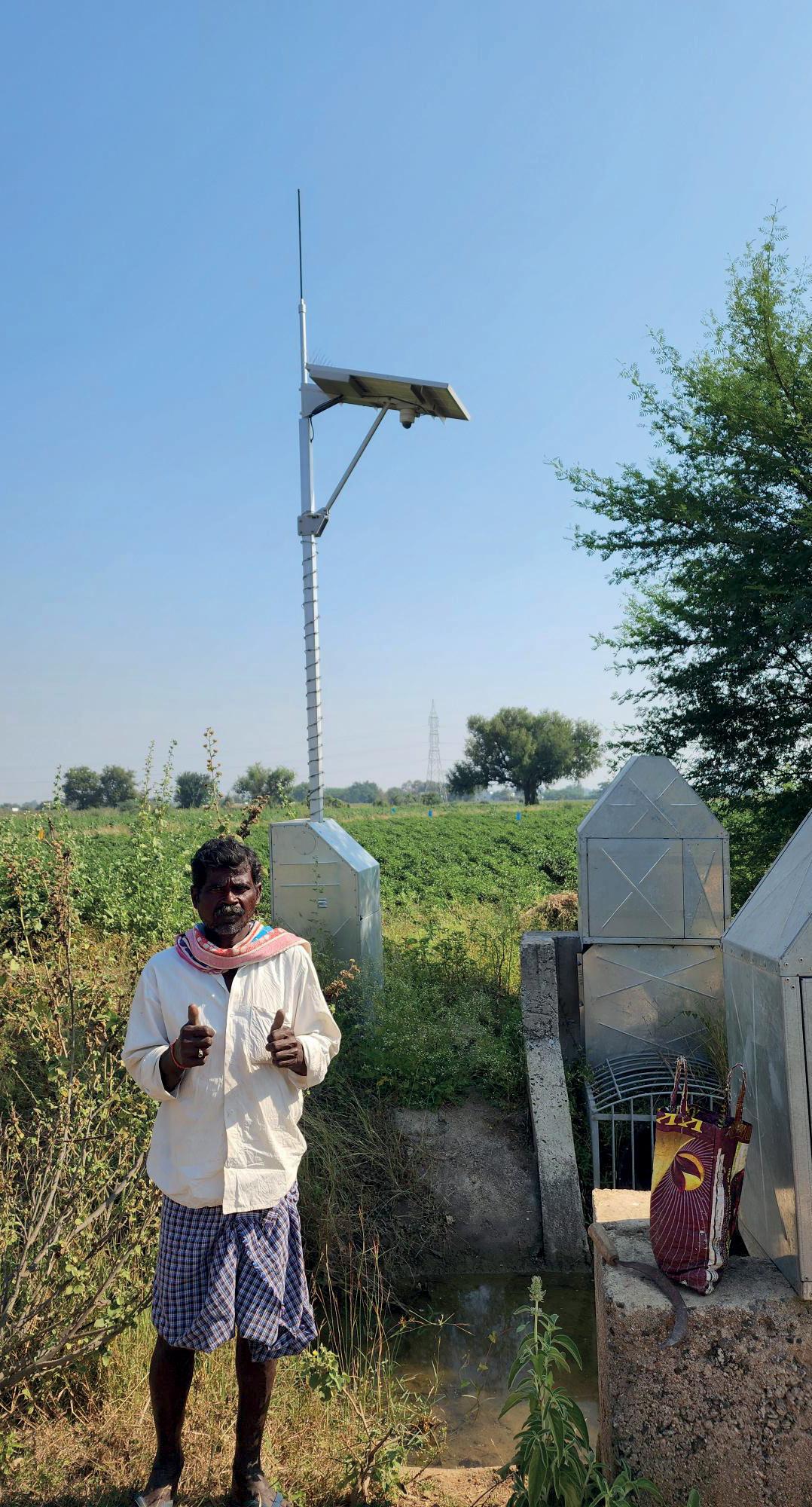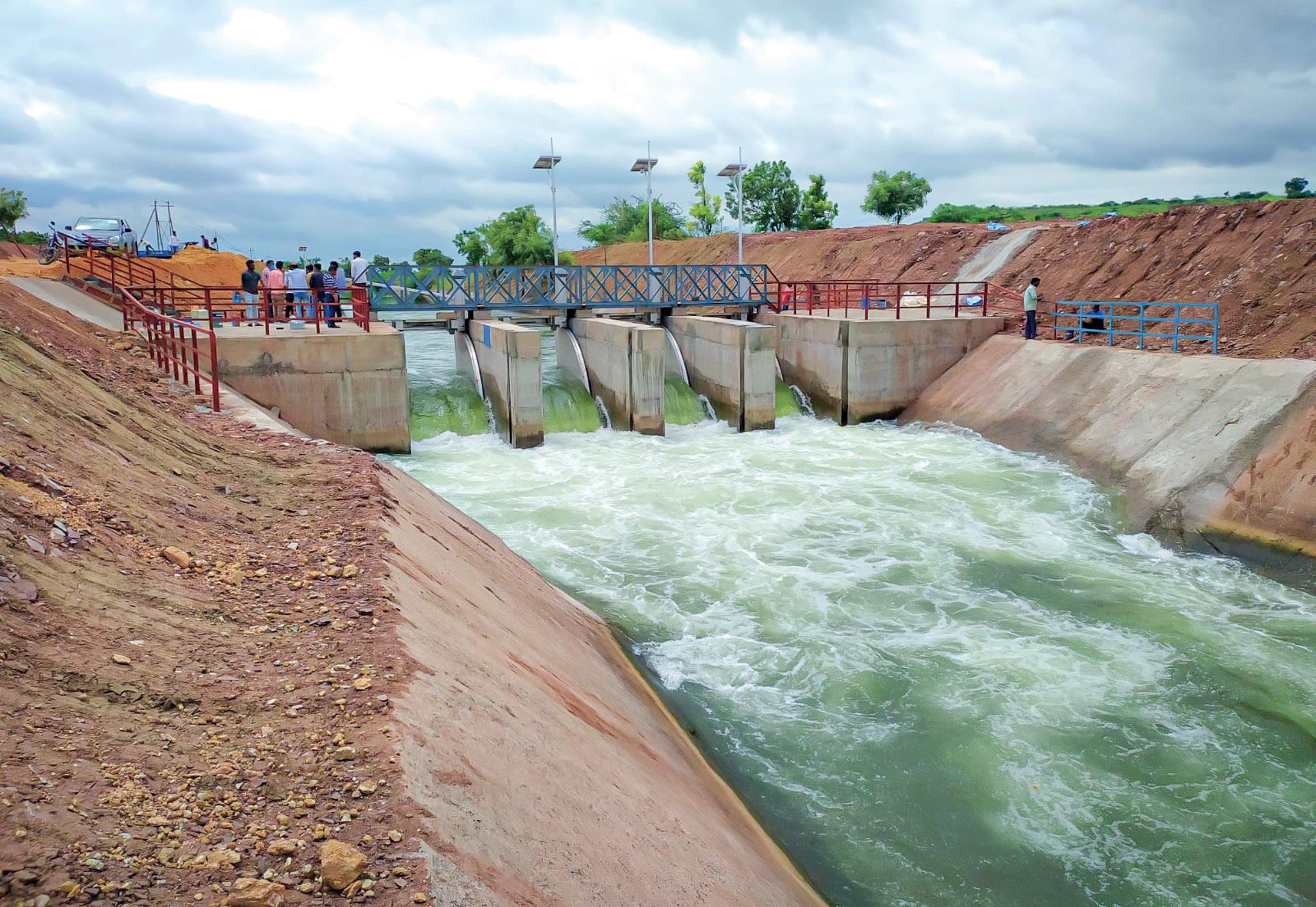
5 minute read
From control engineer to developing a market for irrigation innovation in India
I was born and raised in a state called Kerala, in the southern part of India. Being close to the equator, it’s a very tropical part of the world where it’s often dry for six months and then it rains for six months.
My mother’s side of the family came from an agrarian background. That’s where my interest in agriculture started. I strongly recall witnessing non mechanised irrigation practices in my early years. Bulls would be leveraged for preparing the land for sowing and growing. The primary crop in this region was paddy, so it was closely timed for the monsoon season, with most farms being rain-fed agriculture as there were no irrigation canals or piped networks. I fondly remember being a kid playing through those paddy fields in water that was knee-deep. Due to my father’s job we would soon travel to various cities, where I began to gain exposure to technology. By the age of 16 I had a fascination with electronics, soldering components, and PCBs (now-banned chemical compounds), which ultimately triggered my interest in engineering.
Advertisement
To enrol in engineering we had to write an entrance exam to qualify. Luckily, I cleared the exam and was accepted into Technology in Applied Electronics and Instrumentation Engineering at the University of Calicut. That’s how I became accustomed to instrumentation (measuring), which leads to control systems and control engineering (acting upon measurements).
Once I completed my degree at Calicut I thought there was a need to specialise, so
I applied at the University of Melbourne, at the time one of the top 50 universities in the world.
I was selected and offered a scholarship. It was at the time of the global financial crisis in the early 2000s, so I thought that I’d better acquire more skills. This made it quite an easy decision to pack my things and make the trip down under.
When I began at the University of Melbourne, I didn’t have a topic to research. I met with various professors, and a lot of them were into abstract research where a direct link to any real-world application was probably a bit far off. Within my first six months at the university I met with Iven Mareels, who was the Head of Engineering at the time. He quickly pointed me to the research that Rubicon Water was doing. It was quite an interesting research topic because it was all about leveraging analytics to perform measurements, rather than using actual sensors. You could estimate the value of your water level by having measurements from both an upstream and a downstream location. From this, we developed the theory and then tested it within an irrigation district in New South Wales (NSW), Australia. It was fairly accurate, precise down to approximately one millimetre.
I wasn’t working at Rubicon at this time. In the research of fault tolerance in control systems, there was a whole science of mathematical modelling and controller design, which was still not used at Rubicon. When I joined Rubicon in 2006 they had had lots of breakthrough innovations, but didn’t yet have a mechanism allowing a canal to run autonomously.
I brought that knowledge with me to Rubicon, developing the concept of what’s now known as Total Channel Control (TCC). I started to apply that knowledge to systems in NSW – and it worked. Previously the district operators had to wake up regularly to manually intervene with the system.
I implemented software and control algorithms on one pool at a time. By the end of 2007 that software was mature, and we had the entire network operating autonomously. The distribution efficiency due to the Total Channel Control system improved from around 70 percent to more than 90 percent.
The technology was applied to the other major Australian irrigation districts, now responsible for delivering water to approximately 16,000 irrigators in Australia’s Murray-Darling Basin.

I am now leading the business in deploying some of the largest automation systems throughout the Indian market. It has been a long journey from developing and deploying the early TCC solutions to implementing them in some of the most diverse and complex systems on the globe. I had to build a control team at Rubicon, becoming the first control engineering manager. We expanded the knowledge and leveraged bright brains who could expand TCC to bigger, better technologies. For almost a decade I was a control engineer deploying solutions in Australia, the USA, China, and New Zealand.
The technology was proven successful in multiple arrangements and across different geographies that presented unique challenges. Once the product had matured, I was looking for the next challenge – India. Initially, I was a bit hesitant because I had never held a business development position in my life – all I could do was talk about technology and its benefits.
I knew I had to understand the market first, so I travelled around and met people. I started exploring and understanding the Indian market in 2016 and quickly understood that there was an immense opportunity for technological advancement. In India water is supplied on a rotation basis, meaning there are restrictions on availability, ultimately determining the ability to grow certain crops. This constrains economic potential and creates scarcity by design – creating a bottleneck that restricts farmers from thriving and prevents them from growing high-value crops.
We found that in Karnataka they were progressive and keen on addressing this problem. We began working with the district known as KBJNL in 2017, and in 2019, through a competitive tendering process, we were selected to implement TCC for an area of 450,000 hectares that is serviced by approximately 1,500km of open channel.
We partnered with a fantastic local company to manufacture our technology in India and assist in the implementation of the project.
The project, the largest international project in the history of Rubicon Water, is now nearing completion. We are taking progressive steps rather than completely switching the paradigm from supply to demand. We are addressing the issues now and will then slowly transfer to the fully automated system capabilities.
Change management is a long process. I think we’re probably still at the beginning of that process. It will involve everyone –local politicians will also have to be part of it. Somehow this journey must be started somewhere by somebody, so we have conducted numerous farmer training sessions to showcase the benefits and begin to build trust. We are empowering the people, farmers, and operators on the ground by ensuring they understand the capabilities of the system and the benefits that it’s delivering so that they can keep adapting and improving.
The broader states of India are now looking at what we’re implementing. We are now in the middle of deploying a lift irrigation automation project which is supplying water to higher elevations of the Narayanpur system. Automation is required to improve the supply efficiency of this system because with piped irrigation networks there are energy requirements which we need to optimise, along with pumping costs.
I have learnt a lot from my journey so far and one thing I’ve learnt is that there are many different approaches that can be taken to address the water scarcity issue in irrigation. You can create a scenario of surplus or you can optimise the existing resources. And what I’ve seen is that creating a scenario of surplus is always an easier solution, but it can be quite cost prohibitive. A common example of this in India is interconnecting or interlinking rivers to connect a surplus basin to a deficit basin. Unlike in Australia, New Zealand, or the US, the irrigated area in India is roughly 65 million hectares. When you create a scenario of surplus it simplifies the water distribution problem quite remarkably. But if you must optimise the existing resources across a large area, it becomes a very complex problem.
I do not think knowledge of how it can be easily done is sitting anywhere. What we need to do is to make sure that water is accessible. Irrigation authorities from different parts of the world, water commissions, and water institutes need to align and create a technology benchmark for adoption and technological advancement in order to combat the









